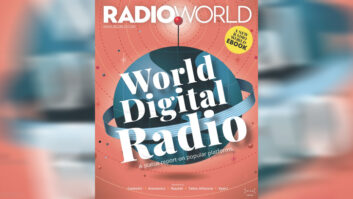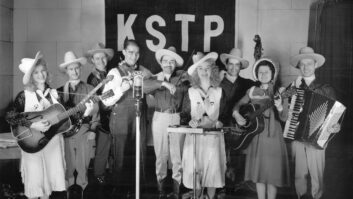Larry Holtz, vice president of Technology for All Classical, is a long-time broadcast engineer in the Portland, Ore., area.
�
Doug Irwin: How long has All Classical been using HD Radio?
Larry Holtz:All Classical’s flagship station, KQAC(FM) Portland began broadcasting in HD in June 2005; followed in 2006 by KQHR(FM) Hood River; and KQOC(FM), Gleneden Beach, Ore. Multicasting came along a few years later.
�
DI: Are all of your stations transmitting HD now?
LH:Of our seven stations and translators, five are HD with plans to convert the other two in the next 12 months.
�
DI:� What separate formats do you have for HD channels?
LH:Our main and HD1 channels are an all classical format, and we lease our HD2 and HD3 channels to local independent music programmers. Our HD2s will become an extended classical music format later in the year.
�
DI:� How do you distribute program to your network of stations?
LH:Our Portland station uses redundant 11 and 18 GHz microwave links that deliver APT Codec SureStream IP packets to the transmitter site. The outlying stations use a combination of leased microwave and DSL or wireless public internet, again with the APT Codec SureStream redundant packet system to mostly eliminate audio drop outs. This packet redundancy has really saved us in great sound quality and cost of leased lines.
�
DI:� Any special projects in the works now?
LH:In early September we’re replacing an old Nautel V7.5D transmitter that has served us well through two site moves on a coastal head aptly named Cape Foulweather. The new Nautel GV7.5D is getting placed in an environmentally-improved building and will allow us a full -10dBc HD injection (a 3 dB increase for us). This project also includes a new Omnia 11 audio processor with MPX over AES digital composite output for the FM “analog” feed.�
�
DI: You mentioned Larcan.� Could you tell me more about how you use Larcan products?
LH:� With one of our outlying translators, we’ve been successful employing the Larcan HDT-1 translator and LA100 linear amplifier. It is challenging at this remote high-desert location. Icing on the antenna required installing an EMR RF circulator to keep the Larcan amplifier isolated from moderate reflected power caused by antenna de-tuning from the ice buildup. Getting a clean receive signal from the primary translated station involved choosing a location a few hundred feet from the broadcast tower and using a Kathrein CLFM receiving antenna with high front-to-back ratio. At another translator site, we have multiple receive antennas with 90 degree staggered mounting and phased sense antennas to null out offending co-channel stations.� In the end, these elaborate receiving systems have been the only way to make the translators function well.
�
Keep reading Digital Radio Update to learn more about how HD radio is used around North America.







